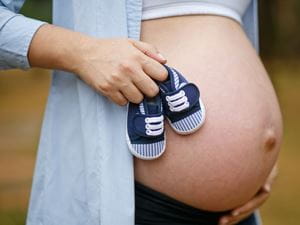
Many pregnant women in the Western World put all their energy and focus on the months that lead up to the birth of their child. Women have detailed birth plans, practice prenatal yoga, take birthing classes and have birthing rehearsals. Once the child is born, however, that intensive focus and care a women has for her body seems to disappear. Women simply accept minor incontinence or vaginal scarring as a part of life.
This acceptance of bodily troubles after birth is related to the subconscious dismissal of a woman’s needs after birth. After all, she is no longer pregnant and so her needs are ignored. The woman herself may disregard them and not have any sort of postpartum plan. That said, a woman’s emotional and physical needs do not simply disappear because she ignores them.
Cultures all over the world focus on the period following birth as a special time for the new mother. Family members, especially female family members, pitch in to help take care of the new mother and new baby, or take up the household responsibilities the new mother may not be able to handle. The new mother, then, can focus on her baby and on herself.
Some Western women today are taking notes from the practices of their more Eastern counterparts and paying special attention to their bodies after they have given birth. These women work to make it a point to focus on postpartum care as much as pre-natal care in order to help their bodies heal and return to their pre-pregnancy state as quickly and healthily as possible. So, what are some ways that these women are honoring their bodies after the completion of their pregnancies?
Warm Foods
Many women in the West want to shed their baby weight as quickly as possible and return to their previous state of fitness. There is nothing wrong with this, but many women fall back on the methods they used before their pregnancy. Beyond the dangers of exercising too heavily with still-fluid joints and ligaments, most women think of smoothies, shakes and raw fruits and vegetables as the best foods to help them get back in pre-pregnancy shape. In reality, women are best served by eating warm foods and dietary fats. Dietary fats are essential for helping a nursing women create breast milk, but too many women avoid them in an effort to drop their baby weight.
Warm foods will help a new mother build up her blood again after birth as well as bring emotional comfort to a new mother whose hormones are in constant flux. Beef, chicken, eggs, dates, cooked greens, soups and stews are all recommended for new mothers. Some people also encourage new mothers to consume spices such as ginger, black pepper and cinnamon. Warm foods also tend to take less energy to digest than equally rich cold foods such as ice cream because cold foods require more energy for digestion, energy a new mother likely does not have to spare.
Belly Binding
Belly wrapping has been used for hundreds of years in Southeast Asian countries such as Malaysia, Indonesia, India, Nepal and Taiwan. The long bands of cloth used for belly binding are wrapped carefully around the new mother to help the mother’s organs return to their original positions. This tradition has slowly been making its way into the West, and many women have come to appreciate the ancient art.
Belly wrapping has been shown to have a number of benefits for new mothers including preventing a separation of the abdominal walls, improving posture, preventing lower back and sacroiliac pain and helping pelvic ligaments retighten. Women who wrap their bellies are encouraged to wear the wrap for at least six hours a day, if not the whole day, and to remove the wrap before going to bed at night.
Vaginal Steaming
Vaginal steaming is another piece of Eastern advice that has just begun making its way into the West. This practice uses herbal steam to penetrate deeply into the tissue of the vagina and uterus to help promote healing. Women who practice vaginal steaming report less tender breasts, less swollen legs and more regular and less painful periods following the end of their pregnancy. The steam is also known to help heal the placental site, aid in clearing out any residue left in the uterus and help keep stitches clean without risky or painful friction. Vaginal steaming can also help a woman’s organs return to their original positions more swiftly, and the heat is relaxing in addition to being therapeutic.
Massage
Massage has been shown to have enormous health benefits for a variety of conditions, and it has proven its worth in postpartum recovery as well. Massage helps a new mother readjust to her no-longer-pregnant shape and relearn her body as well as help her relax during what can be a stressful time. Massage has also been shown to help alleviate the pain of sore muscles, ligaments and tendons caused by a new mother’s sudden change in body shape and weight. Postpartum Indian and Nepalese women often have daily massages in order to take advantage of these benefits and use oils to help restore their nervous systems and rid their bodies of toxins.
Postpartum Yoga
With the Westernized version of yoga having exploded in popularity, most women have at least heard of pre-natal yoga even if they did not take a class themselves. Prenatal yoga encourages the opening and expansion of the pelvis and downward action. Postpartum yoga aims to do the opposite. Postpartum yoga emphasizes strengthening the new mother’s legs, engaging her core and opening her upper back in order to help retighten the ligaments and tendons that became overly flexible toward the end of her pregnancy.
A mother’s need to care for her body does not end when her baby is born, and the changes and stresses on her body are not finished with her child’s first cry. It takes weeks for a woman’s body to heal from birth, and that is assuming there were no complications. Regardless of whether the birth was difficult or unusually easy, women would be well served to pay attention to their bodies after their child is born. A woman who honors her body both before and after birth will recover from birth faster and find it easier to be a part of her child’s life as her baby grows.

